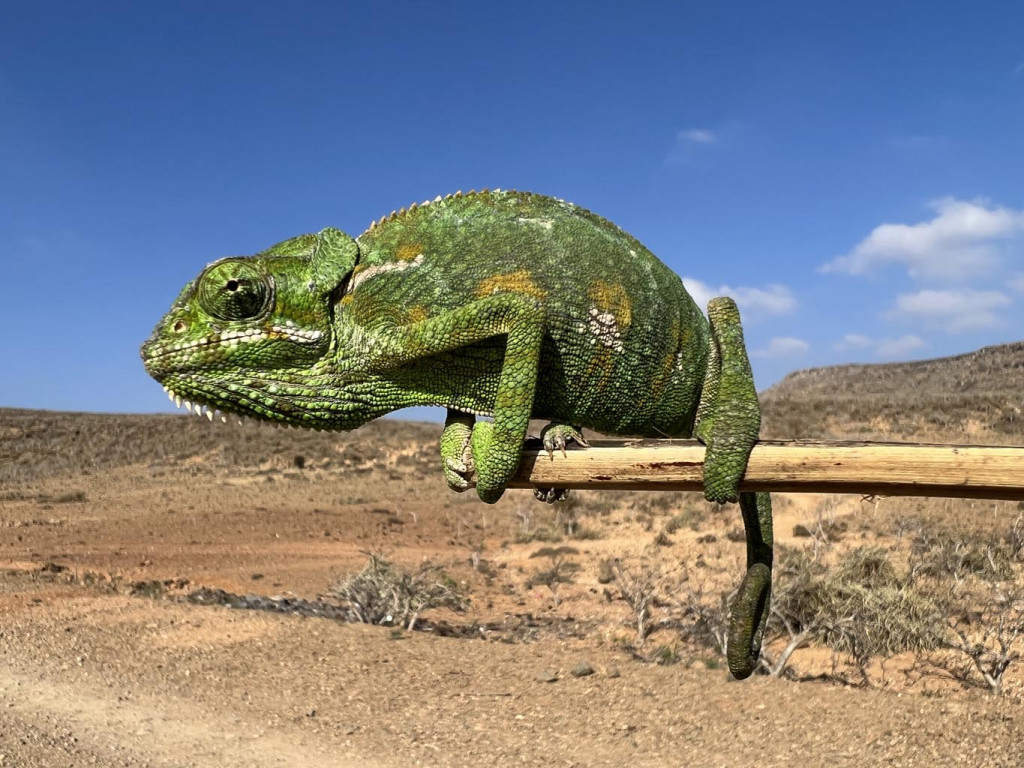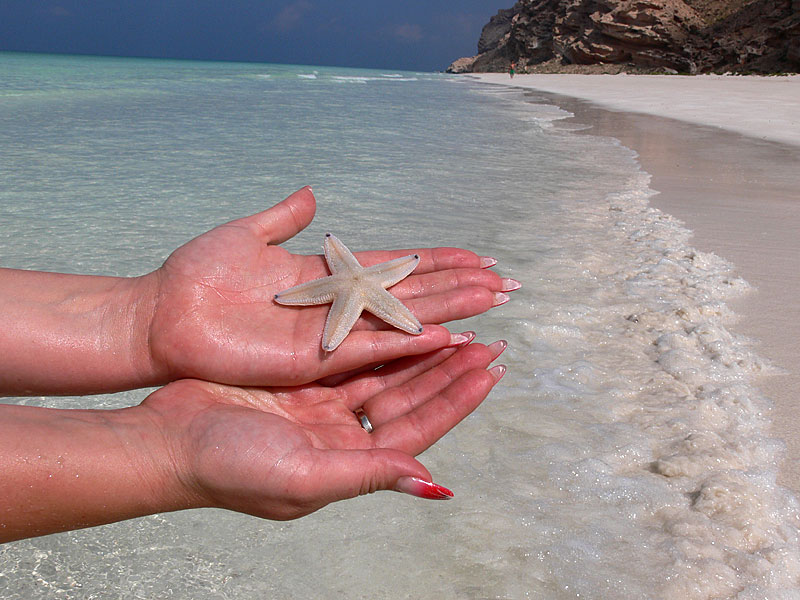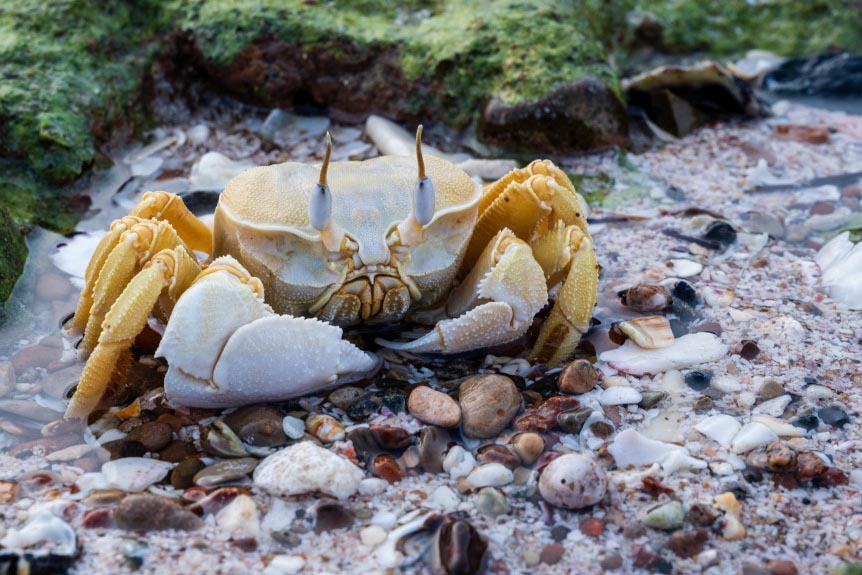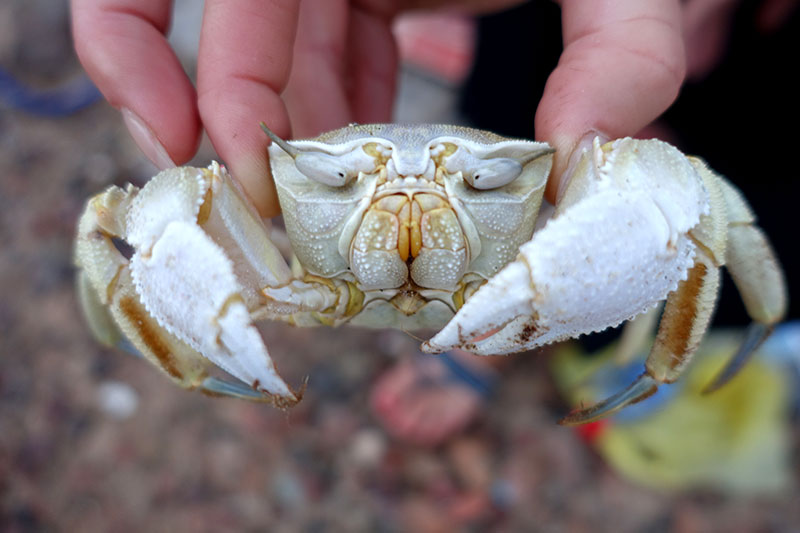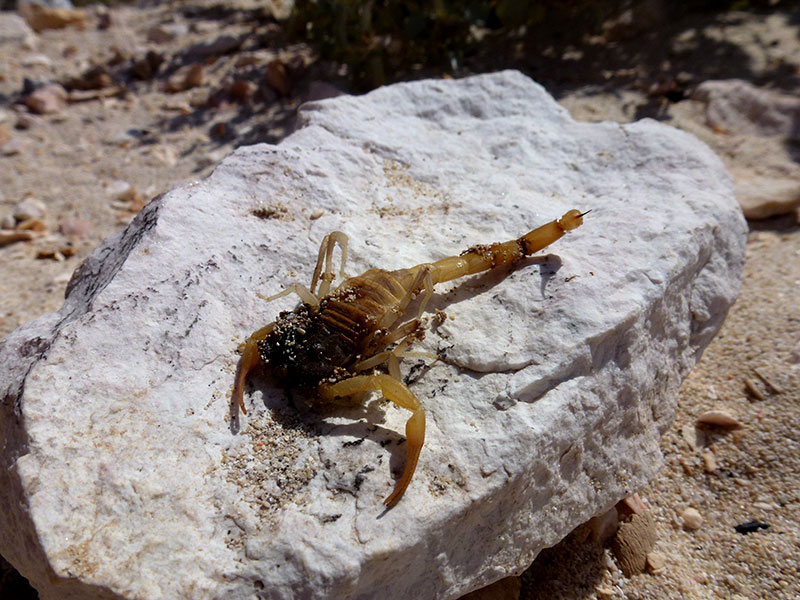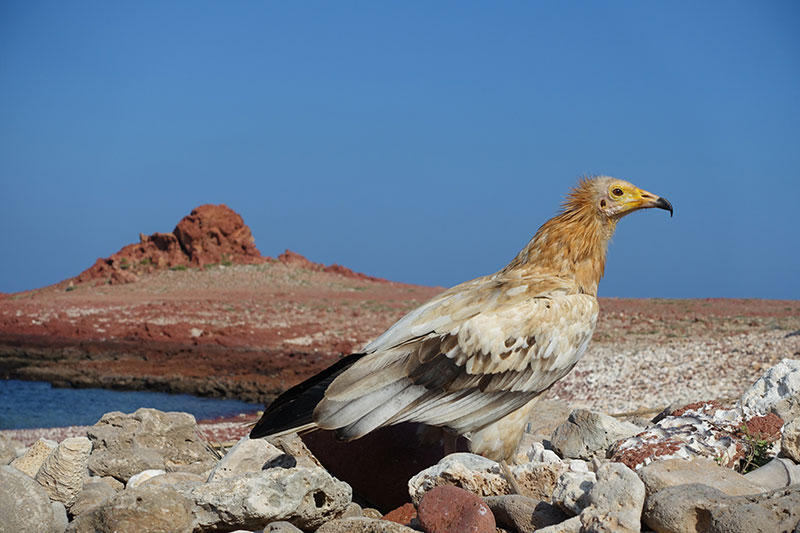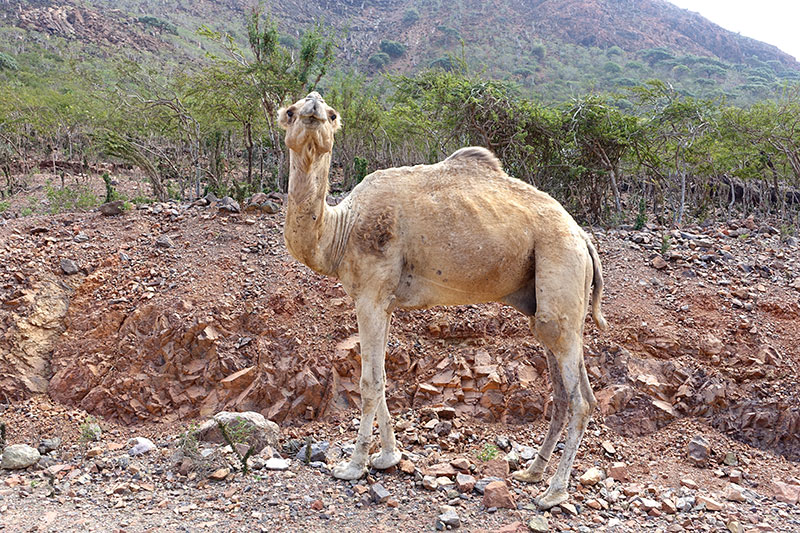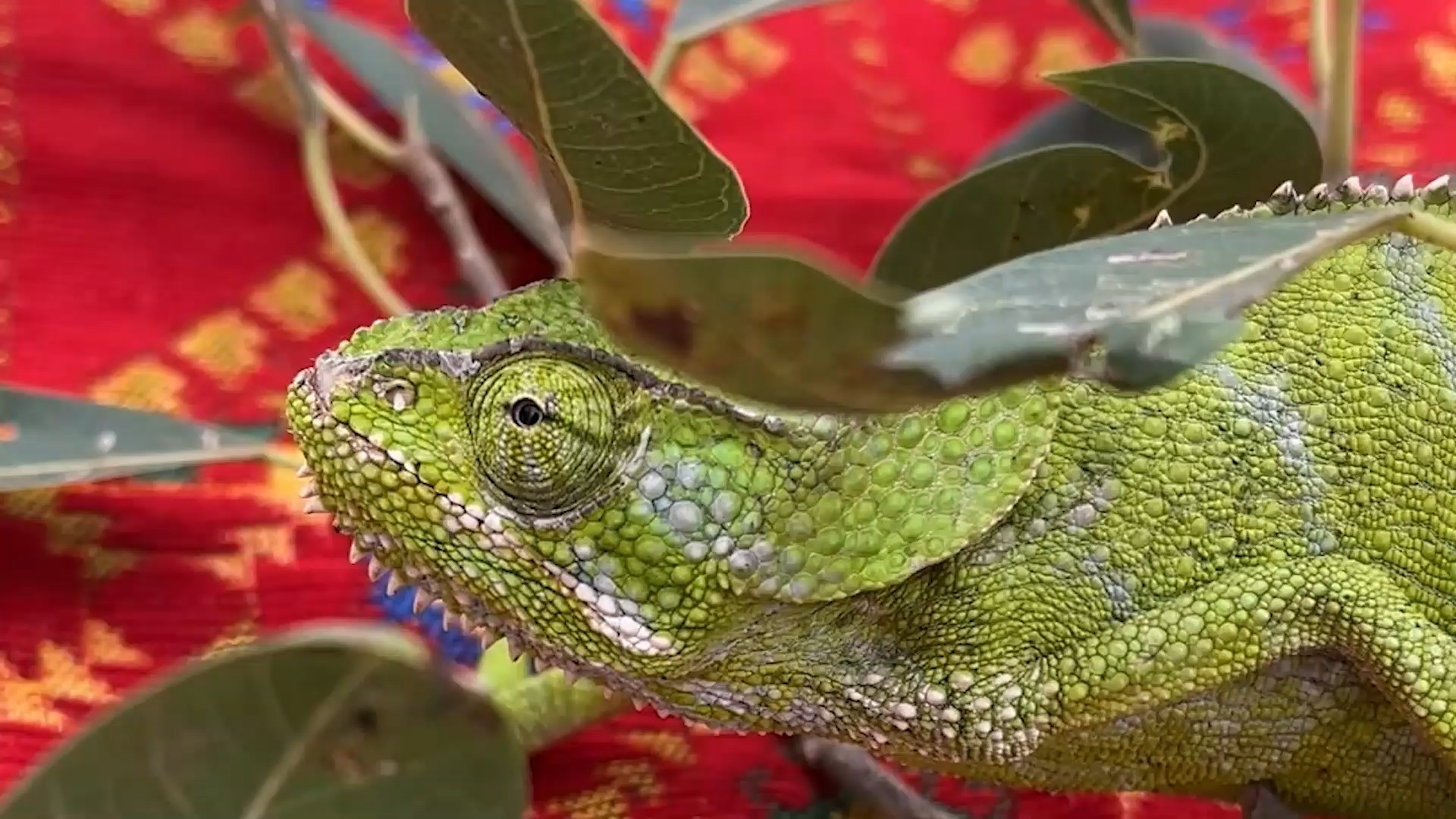

Endemic Fauna
Endemic Fauna of Socotra Island
Thanks to its long-term isolation, the fauna of the Socotra Archipelago is truly unique.
The local ecosystem is remarkable and significant for its endemic species.
Up to 90% of reptiles and 95% of insects (spiders, scorpions) cannot be found anywhere else in the world.
In addition, there are 192 species of birds, many of which are considered endangered.


Studies show that Socotra has no native mammals, with the only exception being a few species of bats – which are, of course, also endemic.
Introduced mammal species include cattle, goats, sheep, dromedary camels, Socotran donkeys, domestic cats, civets, and rodents.
All of these species are well known for their negative impact on island ecosystems around the world, including Socotra.
Overgrazing causes soil erosion in many areas.
The island's isolation, lack of industry, and five-month monsoon season which halts fishing and boat traffic create ideal conditions for a rich marine world. There are 253 species of coral, 730 species of fish, and 300 species of crabs, lobsters, and shrimp.
Coral sand beaches are home to numerous crabs that dig burrows, piling up sand into small pyramids.
Most Famous Endemic Animal Species
Bat (*Hypsugo lanzai*)
Socotra is one of the few islands without native mammals, except for a few bat species, including this newly discovered endemic one.
Spider (*Monocentropus balfouri*)
This endemic spider species is found only on Socotra. Locals call it “fitama.” It lives in small burrows and always finds a new shelter after molting. Males differ from females in color – they are blue with a white to light blue abdomen, while females are creamy beige with hints of orange. Both sexes have hairy legs and lack defensive hairs on the abdomen. It seeks stones under bushes or trees in open, sparsely vegetated areas, digging burrows 10–20 cm deep. The body is 5–6 cm long; the leg span reaches 12–15 cm. It is currently unknown whether it is venomous. It is mostly found at altitudes between 90 and 900 meters.
Gecko (*Pristurus socotranus*)
A lizard equipped with special pads on its toes that help it cling to surfaces and move quickly, even vertically on walls and tree trunks. It has fused eyelids covered with a transparent “window” called spectacles. Mostly nocturnal, it hunts insects and spiders and can produce fairly loud sounds. It grows only a few centimeters and actively explores rock crevices during the day.
Lizard (*Mabuya socotrana*)
This species has a robust, dark brown body and a long thin tail. As it matures, it gains its typical coloration, which helps it camouflage in its surroundings. Juveniles are marked by yellow-black stripes and a bluish tail. It grows to about 20–30 cm in length.
(*Hemidactylus flaviviridis*) – Often shares homes with Socotran locals in their stone houses, tirelessly hunting insects inside. Locals welcome its presence.
(*Haemodracon riebeckii*) – The largest gecko species on the island, nocturnal, and typically found in tree hollows.
Egyptian Vulture (*Neophron percnopterus*)
Also known as the Egyptian vulture, this rare bird species is not endemic to Socotra. It has a bald, featherless head and a sharp, hooked beak. It feeds on small carrion or preys on locusts and small rodents. Remarkably, it uses tools – it can break eggs by dropping stones from its beak. It nests in colonies, usually staying with one partner for many years and using the same nesting spot repeatedly.
In ancient Egypt, the vulture symbolized the goddess Nekhbet, protector of pharaohs and sister of the goddess Isis, and was therefore held in reverence.
Centipede (*Scolopendra valida*)
This reddish centipede can grow up to 40 cm long and is venomous, though not fatally. Its danger lies in its head pincers. Its venom, a mix of acetylcholine, serotonin, histamine, cardio-depressants, and protease, causes intense pain.
Small Civet (*Viverricula indica*)
A relatively common nocturnal predator, about the size of a cat, living in open landscapes. It feeds on rodents, arthropods, and waste. It is captured for the secretion from its scent glands, used as a base in perfumes, and then released back into the wild.
Dromedary Camel (*Camelus dromedarius*)
The largest herbivore on Socotra, perfectly adapted to local conditions. It is creamy brown, with thick fur longest on the head, neck, throat, and hump. Its double-layered eyelashes protect its eyes from sand. The hump stores fat that can be metabolized into energy and water. It also provides shade and protects from heat. Camels are kept for milk, carrying loads, and as transport and draft animals.



